

Journey to the West: Introduction
by That's Mandarin | Oct 11, 2022 | Guest Blogs & Media
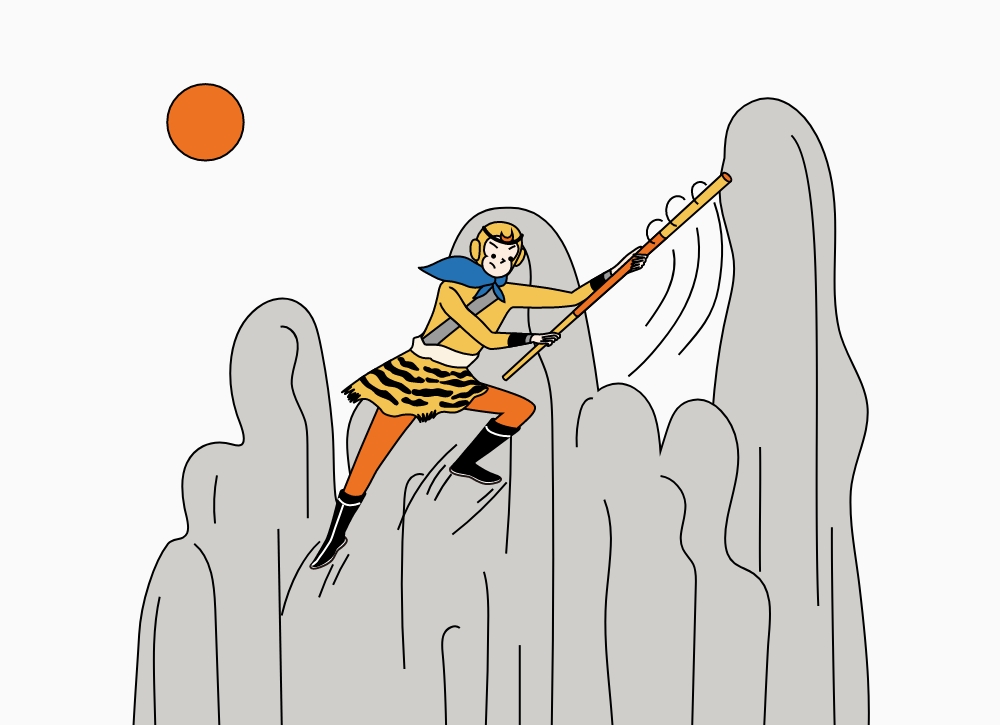
To spark your interest, our guest author Jeff Pepper from Imagin8 Press has shared a brief introduction of the book.
TIP: Scroll the the bottom of the article to discover links to a version of the book written for English-speaking students of Chinese!
Q: What is Journey to the West about?
Journey to the West (西游记, Xīyóu Jì), is a Chinese novel written in the 16th century by Wu Cheng’en (吴承恩, Wú Chéng’ēn).
It is probably the most famous and best-loved novel in China and is considered one of the four great classical novels of Chinese literature. Its place in Chinese literature is roughly comparable to Homer’s epic poem The Odyssey in Western literature. Wikipedia sums up the book’s role perfectly, saying, “Enduringly popular, the tale is at once a comic adventure story, a humorous satire of Chinese bureaucracy, a spring of spiritual insight, and an extended allegory in which the group of pilgrims journeys towards enlightenment by the power and virtue of cooperation.”
Q: Is Journey to the West based on a real story?
The novel’s storyline is loosely based on an actual journey by a Buddhist monk also called Xuanzang who traveled from the city of Chang’an (today’s Xi’an) westward to India in 629 A.D. and returned 17 years later with priceless knowledge and texts of Buddhism.
Q: In short, what is Journey to the West about?
A long time ago, in a magical version of ancient China, the great Tang Empire is ruled by an emperor named Taizong. Due to a mixup involving the wrongful execution of a dragon king, Taizong falls ill, dies, and is dragged down to the underworld. There he comes face to face with the Ten Kings of the Underworld, survives a harrowing journey through hell, and finally escapes with the help of a deceased courtier.
When Taizong returns to the human world he is a changed man. He decides to send a monk to the Western Heaven (that is, India), to visit the Buddha, obtain holy scriptures, and bring them back to the people of the Tang Empire. This task is nearly impossible, requiring the crossing of thousands of miles of wild and dangerous territory. With guidance from the bodhisattva Guanyin, the emperor selects a young monk named Xuanzang.
Xuanzang is a brilliant young man but has a complicated history. In an earlier lifetime centuries before, he was a student of the Buddha but was careless in his studies. Expelled from the Buddha’s temple, he spent the next ten lifetimes meditating and acquiring merit. As an infant in his current lifetime he is nearly killed by bandits, placed in a floating basket by his widowed mother and sent downriver, rescued by a monk, and raised in a monastery. At age eighteen he learns his true history, and goes off to avenge his father’s death.
Later he is chosen by Taizong to undertake the epic journey to the west. Now called Tangseng (“monk from Tang”), he faces a near-impossible task: he must cross hundreds of mountains and thousands of rivers, and survive encounters with a horrifying series of bandits, monsters, demons, ghosts, evil kings, scheming monks, false Buddhas, and much more.
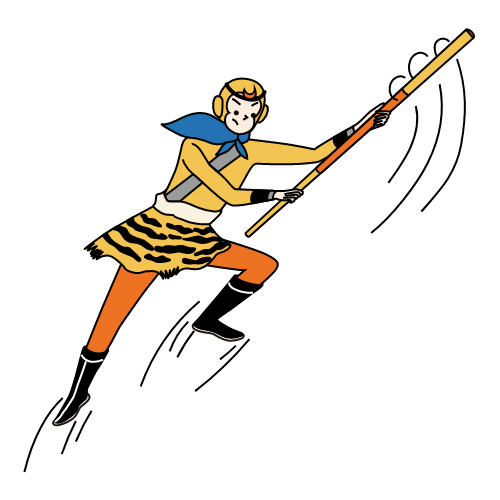
Q: How about the Monkey King and other famous characters?
Tangseng could never survive the journey on his own. Fortunately he acquires three powerful but deeply flawed disciples.
First is the monkey king Sun Wukong (孙悟空, S ūn W ù kōng , his name means “ape awakened to the void”), who he frees from a 500-year imprisonment under a mountain in punishment for creating havoc in heaven.
Second is Zhu Bajie (猪八戒, Zhū Bājiè, “pig of the eight prohibitions”), a gluttonous pig-man who is constantly fighting, and often succumbing to, his desires for food, sex and comfort.
And third is Sha Wujing (沙悟净, Shā Wùjìng, “sand seeking purity”), a reformed man-eating river demon.
All three have been converted to Buddhism by the monk, but they often slip back into their bad habits and cause Tangseng a great deal of trouble. Fortunately they all have great magical powers which come in handy for battling demons and monsters, and saving Tangseng from all sorts of trouble.
The story of this journey is described in this epic novel.
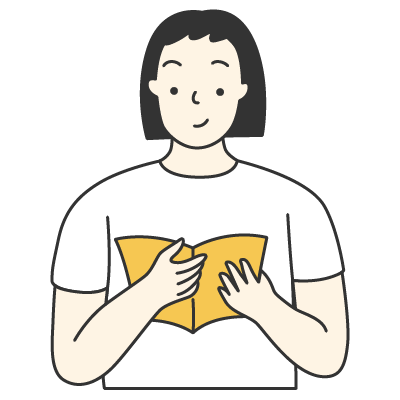
Q: How long is the original book?
The original Journey to the West is a very long book. It contains 100 chapters and is 588,000 Chinese characters long. It uses a very large vocabulary of 4,500 different words, over 90% of which are not included in HSK Levels 1-6, making it quite difficult for most non-native Chinese speakers to read.
The novel is also available in English translation, the best one being by the scholar Dr. Anthony Yu. His version fills four volumes and runs over 2,300 pages.
Q: Is the book suitable for Chinese beginners?
Fortunately for people learning to read Chinese, there is now another way to read this book. My writing partner Xiao Hui Wang and I have spent the last five years writing a series of 31 books that retell the Journey to the West story in language that is accessible to anyone learning to read Chinese at the HSK 3 level. The stories in these books are told in a way that matches the original as closely as possible, but because they are graded readers they are much easier to read. The first book, Rise of the Monkey King, is relatively short and uses just 512 Chinese words. Each book adds more new words and slightly increases the length of the story and complexity of the writing, leading step by step to the longest and most challenging book, Book 31, The Final Trial. All told, the entire series uses about 2,200 different Chinese words excluding proper nouns.
Fortunately, the original novel is not written as a single continuous story, but is broken up into more or less standalone episodes, each one between one and four chapters in length. This makes it possible to read and enjoy any of the 31 graded readers without having to read the ones that came before it.
Each book is written in Simplified Chinese. The books include pinyin, English translation, and a glossary. Free audio versions of each book are available free of charge on YouTube.
Q: Where can I get these books?
A list of all 31 books in the series, along with short descriptions and links to the Amazon product pages and free YouTube audiobooks, can be found on the Imagin8 Press home page, www.imagin8press.com .

by Jeff Pepper
Jeff Pepper ([email protected]) is President and CEO of Imagin8 Press , and has written dozens of books about Chinese language and culture.
Over his thirty-five year career he has founded and led several successful computer software firms, including one that became a publicly traded company. He’s authored two software related books and has been awarded three U.S. patents.
Submit a Comment Cancel reply
Your email address will not be published. Required fields are marked *
Submit Comment
Other posts you might like
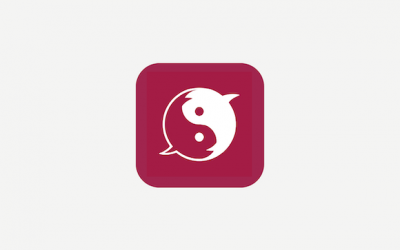
Dong Chinese | Great Tool to Learn Chinese
Sep 13, 2022 | Guest Blogs & Media
The Best Tool to Learn MandarinChinese learning has become extremely popular around the world. One of the reasons why so many people are willing to learn Chinese is that China’s rapid economic growth offers numerous job opportunities to people from different...

Business in Chinese and Chinese Culture
Aug 25, 2022 | Guest Blogs & Media
China is among the leading economic giants in the world. Moreover, the economic, political and social stability coupled with favorable government policies and numerous growth opportunities make it an ideal market for international expansion. However, doing business in...
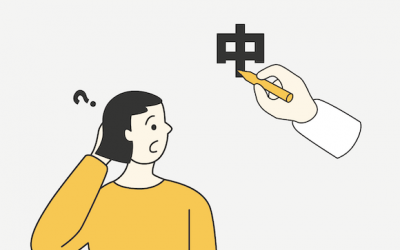

How Is Social Media Slang Changing the Formal Use of Chinese Language?
Aug 3, 2022 | Guest Blogs & Media
Internet culture has created new words that people sometimes use online. This is the case both for the English-language side of the World Wide Web and for any other corner of it – including the Chinese Internet. Users have been creating new slang words that are...
Get 2-week FREE Chinese Classes
Original Price: ¥ 600

Journey to the West: Volume I
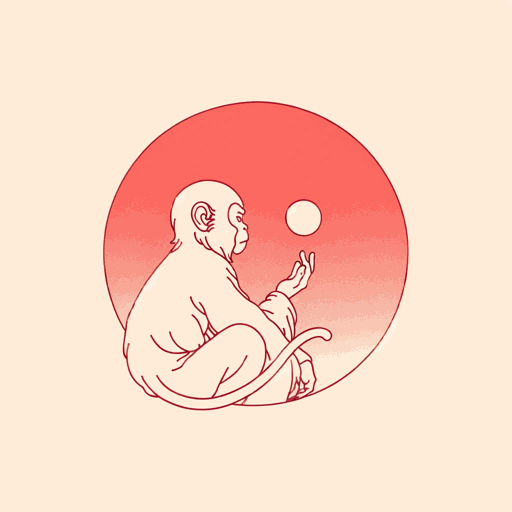
85 pages • 2 hours read
The Journey to the West: Volume I
A modern alternative to SparkNotes and CliffsNotes, SuperSummary offers high-quality Study Guides with detailed chapter summaries and analysis of major themes, characters, and more. For select classroom titles, we also provide Teaching Guides with discussion and quiz questions to prompt student engagement.
Chapter Summaries & Analyses
Chapters 1-5
Chapters 6-10
Chapters 11-15
Chapters 16-20
Chapters 21-25
Character Analysis
Symbols & Motifs
Important Quotes
Essay Topics
Discussion Questions
Chapter 16 Summary
Tripitaka, Pilgrim, and the dragon-horse rest at Guanyin’s monastery. While Tripitaka and Pilgrim are having tea, Tripitaka compliments the tea and the teacups. The abbot serving them tea is honored and certain that Tripitaka has seen many finer things, being that he is on a heavenly journey. Tripitaka insists that there’s nothing so lovely in the east, and even if there was, he wouldn’t have brought it on a journey as long this one. Pilgrim suggests that Tripitaka show off the cassock. The abbot and other monks at the monastery find this amusing because they have so many cassocks, but Pilgrim insists. Tripitaka tries to convince Pilgrim not to because Tripitaka fears that someone might get hurt. Pilgrim offers to take all responsibility.

Don't Miss Out!
Access Study Guide Now
Ready to dive in?
Get unlimited access to SuperSummary for only $ 0.70 /week
Related Titles
By these authors
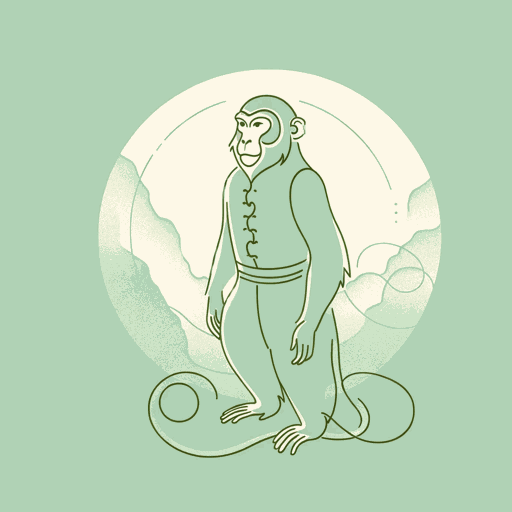
Monkey: A Folk Novel of China
Wu Cheng'en, Transl. Arthur Waley
Featured Collections
Chinese studies.
View Collection
Good & Evil
Order & chaos, pride & shame.

Search form
You are here, journey to the west.
The novel is a fictionalised account of the mythologized legends around the Buddhist monk Xuanzang's pilgrimage to India (known as the Western Regions) during the Tang dynasty in order to obtain Buddhist religious texts called s?tras. The Bodhisattva Guan Yin, on instruction from the Buddha, the historical founder of Buddhism, gives this task to the monk and his three protectors in the form of disciples — namely Sun Wukong, Zhu Bajie and Sha Wujing — together with a dragon prince who acts as Xuanzang's steed, a white horse. These four characters have agreed to help Xuanzang as an atonement for past sins. Journey to the West has a strong background in Chinese folk religion, Chinese mythology and value systems; the pantheon of Taoist immortals and Buddhist bodhisattvas is still reflective of some Chinese folk religious beliefs today. Part of the novel's enduring popularity comes from the fact that it works on multiple levels: it is an adventure story, a dispenser of spiritual insight, and an extended allegory in which the group of pilgrims journeying toward India stands for the individual journeying toward enlightenment.
English translation: http://www.chine-informations.com/fichiers/jourwest.pdf
Traditional Chinese: http://open-lit.com/bookindex.php?gbid=14
Wikipedia page: http://en.wikipedia.org/wiki/Journey_to_the_West
Featured Articles

Happy Year of The Dragon! 祝您龙年快乐!
Happy Lunar New Year from the USC US-China Institute!

Passings, 2023
We note the passing of many prominent individuals who played some role in U.S.-China affairs, whether in politics, economics or in helping people in one place understand the other.

From Netflix to iQiyi: As the World Turns, Serial Dramas in Virtual Circulation
Ying Zhu looks at new developments for Chinese and global streaming services.

The War for Chinese Talent in the United States
David Zweig examines China's talent recruitment efforts, particularly towards those scientists and engineers who left China for further study. U.S. universities, labs and companies have long brought in talent from China. Are such people still welcome?

IMAGES
VIDEO
COMMENTS
Journey to the West, foremost Chinese comic novel, written by Wu Cheng'en, a novelist and poet of the Ming dynasty (1368-1644). The novel is based on the actual 7th-century pilgrimage of the Buddhist monk Xuanzang (602-664) to India in search of sacred texts. The story itself was already a part of Chinese folk and literary tradition in the form of colloquial stories, a poetic novelette ...
Summary. Last Updated September 5, 2023. Wu Cheng'en's Journey to the West is a meandering, fictionalized account of an actual seventh-century pilgrimage to India made by Xuanzang, a Chinese ...
The Journey to the West: Volume I (1983), translated and edited by Anthony C. Yu, contains the first 25 chapters of a 100-chapter hero's epic, an allegory designed to impart knowledge on how to behave and what values to extol. Originally published in the late 16th century during the late Ming Dynasty, this epic is "loosely based on the famous pilgrimage of Xuanzang…the monk who went from ...
This summary hopes to provide insight to Journey to the West for those new to the story, cannot access the full novel, or are simply not bothered to read the full 100 chapters. Everything in this summary is in listed in bullet points, by chapter in chronological order. I guarantee that it'll be a fun read to help guide you through this epic novel.
Journey to the West Summary. The novel's 100 chapters are divided into four uneven parts, each containing a collection of largely unrelated histories and folktales threaded into a single narrative ...
Journey to the West is a fictionalized account of the legends surrounding the 16-year pilgrimage of the Buddhist monk Xuánzàng (602-664) to India during the Táng dynasty, to obtain Buddhist religious texts (sutras).Xuánzàng reached India after experiencing innumerable trials and hardships. He lived there for more than a decade, studying classics of Buddhism and Indian culture at Nalanda ...
Journey to the West (Chinese: Xiyou ji 西遊記) is a Chinese novel published in the 16th century during the Ming dynasty and attributed to Wu Cheng'en.It is regarded as one of the greatest Classic Chinese Novels, and has been described as arguably the most popular literary work in East Asia. Arthur Waley's 1942 abridged translation, Monkey, is known in English-speaking countries.
The plot of Journey to the West concerns Tang Sanzang's quest to bring Buddhist scriptures from India to China. Early in the narrative, the Emperor Taizong sends the monk Tang Sanzang on a ...
Chapter 3: The Monkey's Story. Monkey decides that his clan needs weapons in case they are attacked again. He goes to a city of soldiers and steals their armaments. All 47,000 monkeys in his clan are now armed but, as their king, Monkey deserves something superior to the weapons of his subjects.
Thanks for exploring this SuperSummary Study Guide of "Journey to the West: Volume I" by Wu Cheng'en, Transl. Anthony C. Yu. A modern alternative to SparkNotes and CliffsNotes, SuperSummary offers high-quality Study Guides with detailed chapter summaries and analysis of major themes, characters, and more. For select classroom titles, we also provide Teaching Guides with discussion and quiz ...
Like much Chinese folk fiction of its time, Journey to the West was published anonymously; serious Chinese writers were supposed to write poetry, and those who also wrote folk fiction kept it under their hats.The author of Journey was most likely a man named Wu Ch'eng-en who lived from 1500-1580 and spent his entire life in an atmosphere of reverence for and imitation of classical Chinese ...
1 Monkey is born from a rock. Rising Action. 2 Monkey wreaks havoc in Heaven and starts a celestial war. 3 Buddha bests Monkey and builds a mountain on top of him. 4 Murdered Dragon King haunts the Emperor of T'ang to death. 5 Tripitaka's companions are eaten by ogres. 6 Monkey battles the false king of Crow-cock.
The Journey to the West: Volume I. A modern alternative to SparkNotes and CliffsNotes, SuperSummary offers high-quality Study Guides with detailed chapter summaries and analysis of major themes, characters, and more. For select classroom titles, we also provide Teaching Guides with discussion and quiz questions to prompt student engagement.
Chapter. Summary. Chapters 1-3. In the small country of Ao-lai, a rock splits open to reveal a stone egg that transforms into a living stone monkey. M... Read More. Chapters 4-7. The Spirit of the Planet Venus takes Monkey to Heaven, where he is assigned to the stables. At a feast celebrating his...
Monkey leapt down from his tree, and coming forward said with a bow, "Fairy boy, I am a pupil who has come to study Immortality. I should not dream of making a disturbance.". " You a pupil!" said the boy laughing. "To be sure," said Monkey. "My master is lecturing," said the boy.
Journey to the West (西游记, Xīyóu Jì), is a Chinese novel written in the 16th century by Wu Cheng'en (吴承恩, Wú Chéng'ēn). It is probably the most famous and best-loved novel in China and is considered one of the four great classical novels of Chinese literature. Its place in Chinese literature is roughly comparable to Homer ...
Journey to the West Journey to the West 2 • Chapter 90 • Chapter 91 • Chapter 92 • Chapter 93 • Chapter 94 • Chapter 95 • Chapter 96 • Chapter 97 • Chapter 98 • Chapter 99 • Chapter 100 Chapter 1 The Divine Root Conceives and the Spring Breaks Forth
The tale of Monkey and his journey deep into the Buddhist heartland of India is an elaborate tale filled with adventure, allegory, and spiritual insight. Monkey tricks his way in and out of many stressful situations. He is a deviant, mischievous little fellow who can never be trusted. The story itself is quite unlike any traditional Western tale.
The Process of Earning Redemption. Journey to the West may recount a fictionalized version of historical events; however, Wu Cheng'en's monumental work is an allegory for human striving and ...
The Journey to the West: Volume I. A modern alternative to SparkNotes and CliffsNotes, SuperSummary offers high-quality Study Guides with detailed chapter summaries and analysis of major themes, characters, and more. For select classroom titles, we also provide Teaching Guides with discussion and quiz questions to prompt student engagement.
Journey to the West has a strong background in Chinese folk religion, Chinese mythology and value systems; the pantheon of Taoist immortals and Buddhist bodhisattvas is still reflective of some Chinese folk religious beliefs today. Part of the novel's enduring popularity comes from the fact that it works on multiple levels: it is an adventure ...
Journey to the West (Chinese: 宇宙探索编辑部; pinyin: Yǔzhòu tànsuǒ biānjí bù; lit. 'Universe Exploration Editorial Department') is a 2021 Chinese film written and directed by Dashan Kong in his feature film debut. The English title is inspired by the 16th century Chinese literary classic of the same name.It had its world premiere at the 5th Pingyao International Film Festival in ...